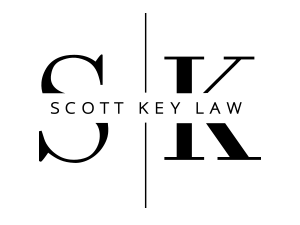Qualified Immunity: The Ultimate Product of Judicial Activism
Congress will soon take up multiple bills to pull back the doctrine of Qualified Immunity. In the House, a bill has been introduced that would roll back Qualified Immunity as it relates to law enforcement and corrections officers. In the Senate, a bill is pending that would roll back qualified immunity as applied to an even broader class of government workers. In either event, the rollback of qualified immunity is an important step for increased government accountability. In this brief post, I will discuss what qualified immunity is and how it came about. Then I will briefly make the case that qualified immunity should be rolled back significantly if not entirely.
A Brief History of QI
Qualified immunity is a recent innovation in the law and is entirely a creature of case law. The right to sue government officials for the violation of constitutional rights originated in the passage of a ku klux klan bill of 1871. The relevant language is codified in 42 USC § 1983, which provides a private cause of action for those whose rights are violated by a government official. The law existed for nearly 100 years before the doctrine of qualified immunity emerged by case law, in Pierson v. Ray (1967). Pierson established that certain government officials enjoy a measure of protection from suit. Specifically,“under the prevailing view in this country a peace officer who arrests someone with probable cause is not liable for false arrest simply because the innocence of the suspect is later proved.” The next and most significant step toward qualified immunity came in 1982 in Harlow v. Fitzgerald. In Harlow, the Court held that “Henceforth, government officials performing discretionary functions generally are shielded from liability for civil damages insofar as their conduct does not violate ‘clearly established’ statutory or constitutional rights of which a reasonable person would have known.”
Where Things Stand
After Harlow, it has become exceedingly difficult for a plaintiff to prevail in a civil rights action. An officer who knowingly violates someone’s constitutional rights will generally be protected from suit unless the victim can identify previous judicial opinions that addressed the specific context and conduct. And that case must fit the exact contexts and action down to a high degree of specificity. There is a degree of circularity at play in this doctrine. How does the law ever change if a plaintiff must show a previously-exact case in order to pierce qualified immunity?
In a ninth circuit case, for instance, police attempted to steal $225,000 after a raid. The officers were protected by qualified immunity because “there was no clearly established law holding that officers violate the Fourth or Fourteenth Amendment when they steal property seized pursuant to a warrant.” Even if stealing is wrong, no law held that stealing money violated a constitutional right. And the officers were shielded from liability.
Why QI Should be Rolled Back
Justice Clarence Thomas appears to favor a rollback of qualified immunity to Pierson. And here is why it is important to turn the clock back to where it stood before Harlow. Criminal prosecution is not a good instrument for law enforcement reform. It is a huge ask to demand prosecutors to prosecute the officers who prepare their cases. And juries have been reluctant to indict, much less convict, law enforcement officers. To be sure, the standard for conviction beyond a reasonable doubt is difficult to prove. However, the preponderance standard for a civil rights violation is easier to meet and likely less of an ask for jurors. Furthermore, the civil standard creates a financial incentive for lawyers to bring suit before jurors whose jobs do not depend on shielding law enforcement. States and municipalities will bear a financial incentive to safeguard civil rights, as insurance premiums will depend upon hiring, retaining, disciplining, and training offices to protect the civil rights of those with whom they come in contact.
Bills currently pending in Congress are a good move toward a regime that will reduce police mistreatment and brutality. Increased public

Leave a Reply
Want to join the discussion?Feel free to contribute!